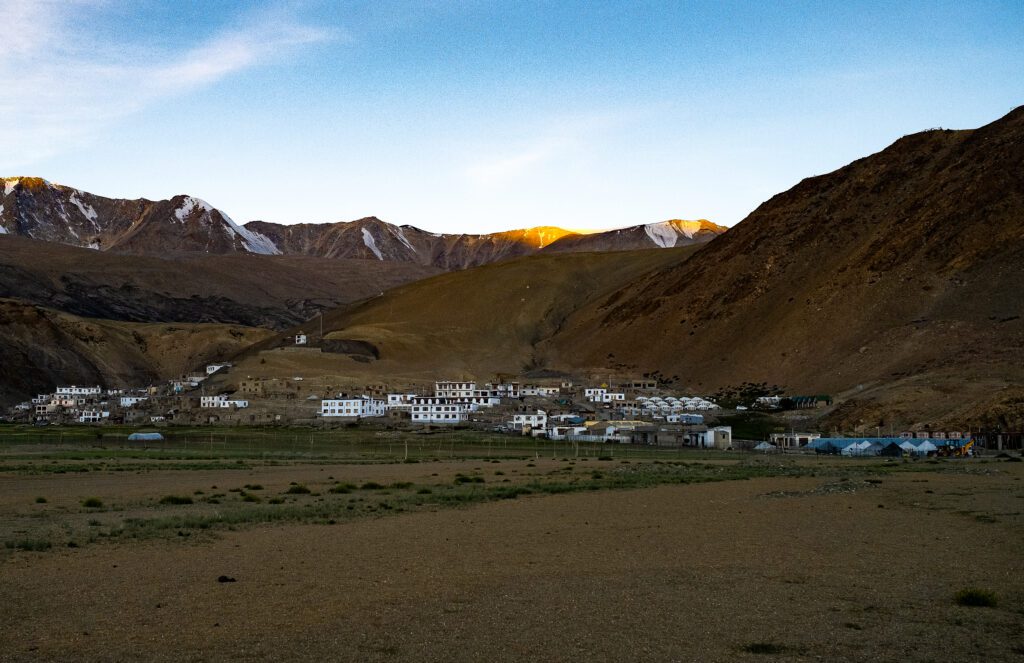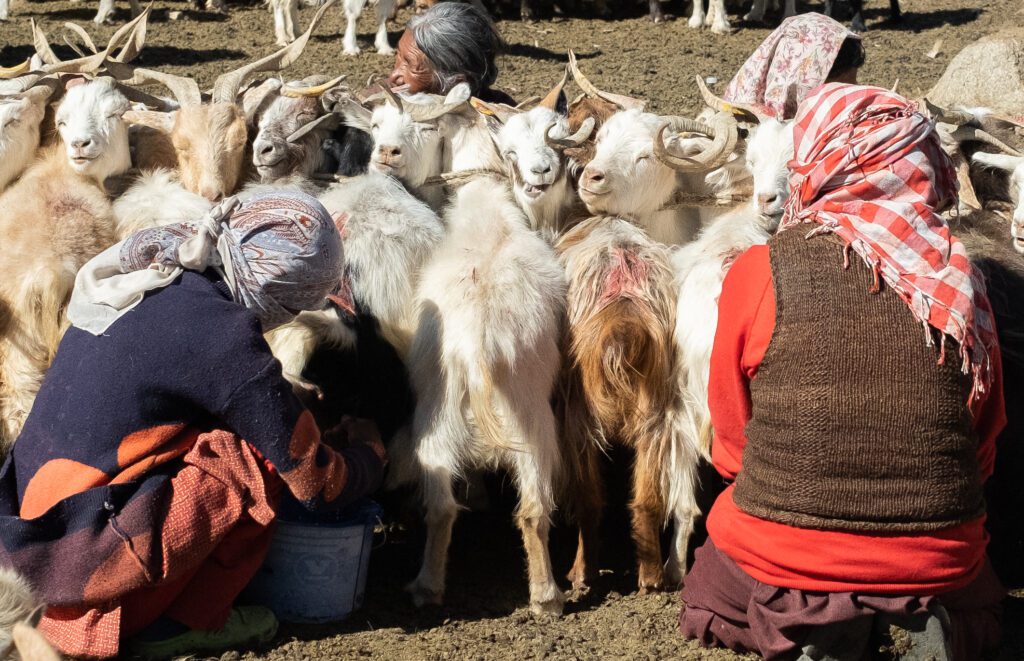Pashmina is the undercoat of goats which are mostly found in Tibet, Mongolia and India. In India most of it comes from the Changthang region of Ladakh, which is a high-altitude cold desert at heights between 4000 and 4500 meters, extending into Tibet. The Changthang plateau is inhabited by pastoralist nomads called Changpas. As agriculture is not possible in these harsh conditions, the Changpa economy is centered on livestock and their products. Although they also keep sheep, yaks and horses, Pashmina goats are their most important source of income.

The climatic conditions in Changthang are very harsh, and the winters are particularly severe. These conditions are ideal for the goats to develop very fine and soft pashmina undercoats to survive the harsh winters. It is for this reason that pashmina is one of the finest materials and is ideal for making shawls and stoles.
In the old days (that is until the 1950s) all pashmina shawls in Kashmir were made with material from western Tibet. This was purchased and brought to Leh and Srinagar by a group of traders called Palace Traders, who had the monopoly of purchasing pashmina from Tibet. The trade in pashmina between Ladakh and Tibet was regulated by a treaty (called Treaty of Tingmosgang), according to which Tibetan nomads were required to sell pashmina only to traders from Ladakh. These traders supplied pashmina to weavers in Kashmir, who used it to make wonderful pashmina shawls.
This situation changed after the 1950s following the border conflict between India and China. As the border with Tibet closed, the supply of pashmina from Tibet stopped. The shawl makers in Kashmir had to look for alternative sources, and the demand for pashmina from Ladakh grew. Today, Ladakh provides a large proportion of the pashmina used in India.
The Changpas comb the goats to gather pashmina (along with thick goat hair) in summer, when it is not needed by the goats. On average a goat provides about 250 grams of raw pashmina. Before it can be used for spinning and weaving, it is necessary to separate the fine pashmina from the thick hair (a process called de-hairing). In the past this was done by hand. A large number of women in Srinagar and other pashmina shawl producing areas were engaged in this process. In recent years a number of mechanized dehairing plants have been set up, almost completely replacing the manual de-hairing practice.

As the demand and price of pashmina has seen a steady increase in recent years, goats have become the most important source of income for Changpas. It is estimated that the Changpas have between 150,000 and 200,000 pashmina goats, which produce between 35 to 40 tons of pashmina every year. The demand for pashmina has seen a large increase in recent years, which production from Ladakh is not sufficient to meet. The gap in supply is being met by imports from Mongolia and other places.